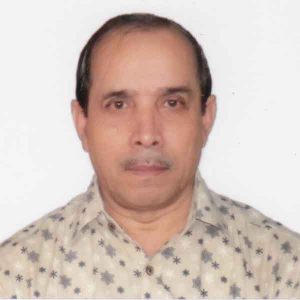Mostafa Kamal Majumder
The Narayanganj Sadar Upazila administration is campaigning to persuade the residents of a mahalla of the district town not to disturb the family of a doctor for contracting coronavirus. Shilpi Aktar, the doctor who has been seeing Covid-19 patients at the 300-bed hospital in the town for months finds 17 members of her family proving coronavirus positive. A video clip went viral in the social media on Thursday showing a female official telling residents of buildings alongside Dr. Shilpi Aktar’s that the Upazila administration will arrange everything for the family and its members would not come out of their house. But they (mahalla people) should not disturb the family. The doctor was serving the community tirelessly at the hospital before herself and her family members became victims of coronavirus.
Using a megaphone the female official was expressing her anger that some residents of the mahalla had been complaining to the administration against the doctor’s family for continuing to live in the area with their ailments. They even asked the Upazila administration to shift the family elsewhere. She told the mahalla people ‘they will keep inside their house and will not be harmful to you, but you should behave.’
The Upazila administration official was accompanied by a group of army men who asked the residents of the nearby buildings to keep inside. Clearly, misgivings and superstitions were running high in the mahalla, as in the rest of capital Dhaka and the country at large, about coronavirus patients. Because of this, families with Covid-19 patients are overnight turning into social outcasts. There are many incidents of neighbours asking such families to vacate homes. According to reports published in the media, one Covid-19 patient was even threatened to be burnt alive if he did not vacate his rented room.
The social stigma against Covid-19 patients has reached alarming proportions. This calls for urgent social motivation campaigns against the false notion of danger that such patients pose to others. Here comes the role of the government and the mass media. The government and the physicians should give the correct information about the modes of spread of the virus for the mass media to disseminate and remove the wrong notions that have created misgivings and stigma against coronavirus patients.
A similar environment of misgivings and stigma prevailed against HIV and AIDS patients in the Bangladesh society in the late eighties and the early nineties when HIV patients started surfacing in the country. The stigma was caused by a wrong understanding of the disease and about the modes of its transmission from one person to another. In one case villagers of a Northeastern district chased an HIV patient and openly talked about burning him to death. Villagers refrained from bathing or washing clothes in a pond used by the man. In another case, a young man and his nephew who were deported from an Arab country were confined to a room at the Chest Diseases Hospital. Tests subsequently proved them not HIV positive cases, and they were freed.

The present prejudices against Covid-19 patients appear to be stronger than those that used to prevail against HIV/AIDS patients in that at least their burial was not considered a threat to others. The management of a graveyard at the centre of Dhaka city was found to put up a banner in late march urging the Prime Ministers and others in the government to spare their place from burying a Covid-19 dead. But people are reluctant to observe social distancing restrictions and are found to roam about at will or go shopping unless stopped by law enforcers, even though this poses a greater risk of contracting the virus.
The misconceptions and prejudices against HIV/AIDS patients were removed through effective use of the mass media. Some international humanitarian organizations in association with their Bangladesh counterparts arranged two workshops for reporters and sub-editors of newspapers and news agencies to acquaint them with the ABC of that pandemic. Their training was supported by ensuring the presence of persons living with HIV at the workshop. At that time there was none in Bangladesh to come out publicly declaring his or her HIV status and work for the welfare of others. So HIV positive persons had to be brought from India and the UK for the purpose of the first of the two workshops. The social stigma and prejudice against HIV/AIDS patients started disappearing when 30 odd newspersons started writing informed stories in more than two dozen newspapers and media. Now there is hardly any wrong notion or prejudice against AIDS patients in the society.
The present situation does not permit the organization of workshops like those on HIV/AIDS because of social distancing restrictions. But the credible doctors dealing with coronavirus patients can share educative information with the media through handouts or videos for dissemination among the members of the public. It’s true that doctors dealing with the pandemic are overwhelmed by the pressure of work. But for the benefit of all, they should share information that could help end the misgivings and prejudices prevailing in the society. They should create role models. For instance, with a little bit of care, they can put bodies of coronavirus victims into safe bags and hand them over to their relatives for safe and honourable burial.
The Narayanganj Sadar Upazila official tried her best to persuade the residents of a mahalla of the district town to behave responsibly. Hers was only one voice and hopefully, it will work. But when the same message is aired through the mass media involving credible peers, it reaches a larger audience and creates much greater awareness. This will call for collaborative efforts of people at the Directorate General of Health Services and media practitioners of the mass media to tune messages to perception levels of their audiences. There is no time to waste. Because indications are that numbers of patients and bodies of victims will continue to increase for some time in Bangladesh before the curve starts to flatten. (01 May 2020)
(The writer is the editor of GreenWatch Dhaka)




